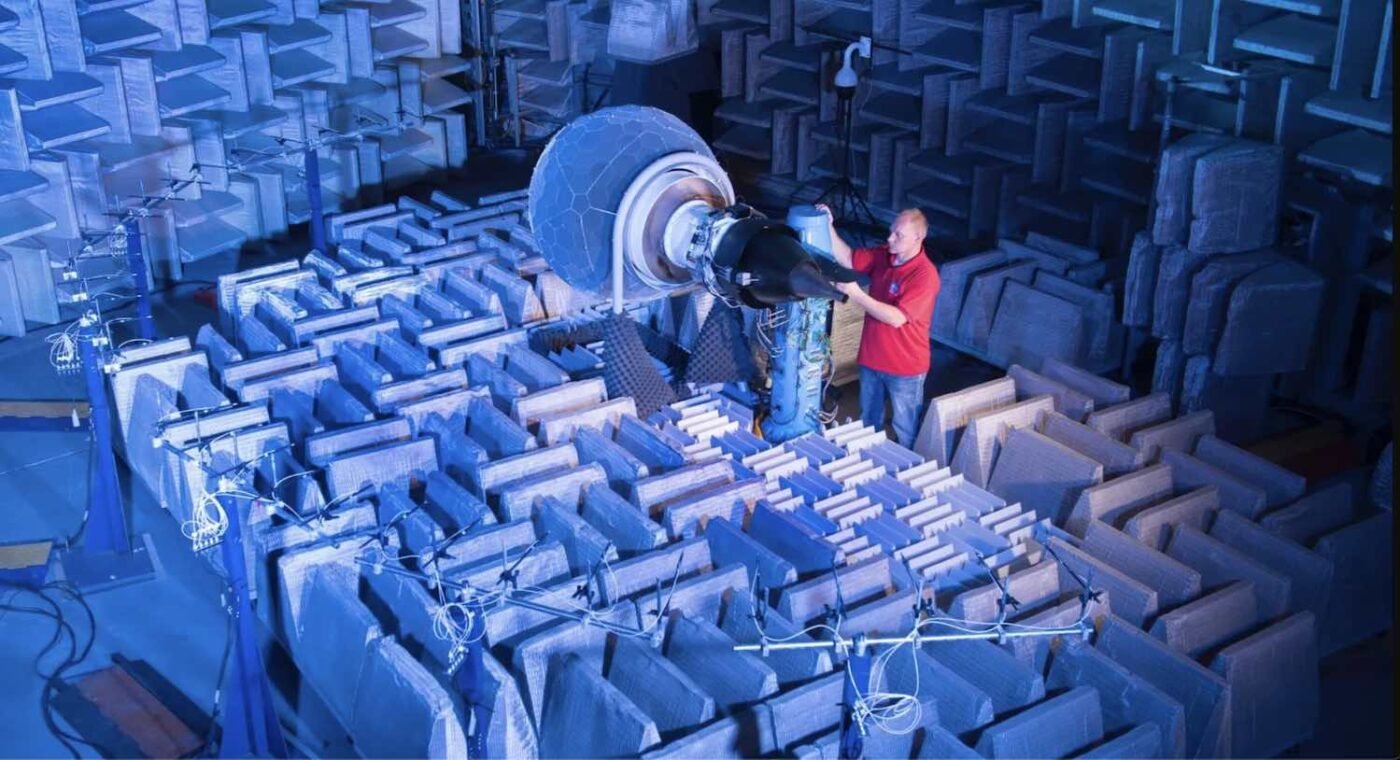
Posted on 04/29/2024 12:01:53 PM PDT by Red Badger

A small-scale jet engine compact enough to fit on a tabletop is helping to make the future of aviation more sustainable, according to NASA engineers currently involved in tests that could help pave the way toward new aircraft propulsion systems of the coming decades.
The DGEN380 Aero-Propulsion Research Turbofan (DART) is less than 4.5 feet in length, making it half the size of engines on moderately sized aircraft, and NASA engineers are now using the miniature engine to help to reduce costs associated with using a full-sized jet engine for research and testing purposes.
Currently, experiments with the small jet engine are being undertaken at NASA’s Glenn Research Center in Cleveland, within the facility’s Aero-Acoustic Propulsion Laboratory. Home of the Nozzle Acoustic Test Rig (NATR) developed for tests involving acoustic and aerodynamic aspects of advanced nozzle concepts, the facility also employs the Small Hot Jet acoustic Rig (SHJAR) which employs lasers to test turbulence studies and gauge thrust performance.
Although it shares a similar name with NASA’s Double Asteroid Redirection Test, the entirely separate DART engine was assembled by French aerospace company Akira (formerly known as Price Induction), and since its acquisition by NASA seven years ago, has become a key component alongside several new technologies NASA is employing to aid in making the aviation industry more sustainable.
In addition to the benefits of its compact size, DART allows an accessible way to gauge new technologies that aren’t yet at full-scale operation, according to NASA Glenn engineer Dan Sutliff, who is currently the coordinator for research with the DART engine program.
DART has already proven useful during studies involving several components of NASA operations, which include the space agency’s ongoing efforts to reduce the noise produced by aircraft engines that will make future airliners quieter.
In addition to cutting back on noise pollution, NASA engineers are also looking ahead toward developing highly efficient next-generation airliners that will be used in the decades ahead, with current timelines aiming for their institution by the 2030s.
Before testing these ultra-efficient aircraft engines in NASA’s larger facilities, initial experiments with the DART engine could pave the way toward meeting those intended goals.
“DART is a critical bridge between a design and a wind tunnel test,” Sutliff recently said in a statement, adding that technologies that have been tested at Glenn’s Aero-Acoustic Propulsion Laboratory in the past have shown to have a better shot at being implemented on new types of aircraft engines.
Capable of generating 570 lbs of thrust, DART’s DGEN 380 engine contains five main turbo machinery components. The unit’s high-pressure turbine is connected by a high-pressure compressor through a high-speed shaft, all of which are complemented by a corresponding low-pressure turbine and shaft that drives the engine’s fan with help from a speed reducer gearbox. The DGEN 380 also employs a 14-inch fan which can attain maximum speeds in subsonic ranges.
However, part of what makes the DART engine particularly useful in the testing environment is its ability to measure the amount of air that passes through the main core engine’s turbofan, as opposed to actually going into it. This is referred to as its bypass ratio, and having a higher ratio makes DART’s functionality similar to the ratios on many current aircraft engines in use.
Higher bypass ratios help engines maintain fuel efficiency and allow DART to be an ideal starting point for experiments with new varieties of propulsion. Additionally, the small engine’s efficiency makes it ideal for tests in advance of the development of small-core jet engines that will likely begin to power aircraft by the next decade.
Further benefits of DART’s economical operation allow studies involving a range of other aviation technologies, which include engine control development, sensors, and instrumentation studies, installation effects of various components, as well as special coatings used to protect engine components and a range of other tests.
“The test rig helps NASA save resources and contribute to protecting our environment,” Sutliff said.
Micah Hanks is the Editor-in-Chief and Co-Founder of The Debrief. He can be reached by email at micah@thedebrief.org. Follow his work at micahhanks.com and on X: @MicahHanks.
Yes, but this engine can help justify the 150 billion dollars spent to develop it with help from friends, relatives and fellow investors.
I wonder if it’s thrust is measured in dollars per second.
Engine upgrade for my Cessna 172! :)
Your soul.
If it’s too much exertion for you to switch the case in your headline from ALL CAPS to Sentence Style, maybe you should switch to Geritol.
Paging Ben Rich of Lockheed! Look him up! “anything you can think of is already a reality in Space”
I’m familiar with Ben Rich. He was wrong when he said it, and still is — unless he was referring to ETs of course. :^)
Disclaimer: Opinions posted on Free Republic are those of the individual posters and do not necessarily represent the opinion of Free Republic or its management. All materials posted herein are protected by copyright law and the exemption for fair use of copyrighted works.